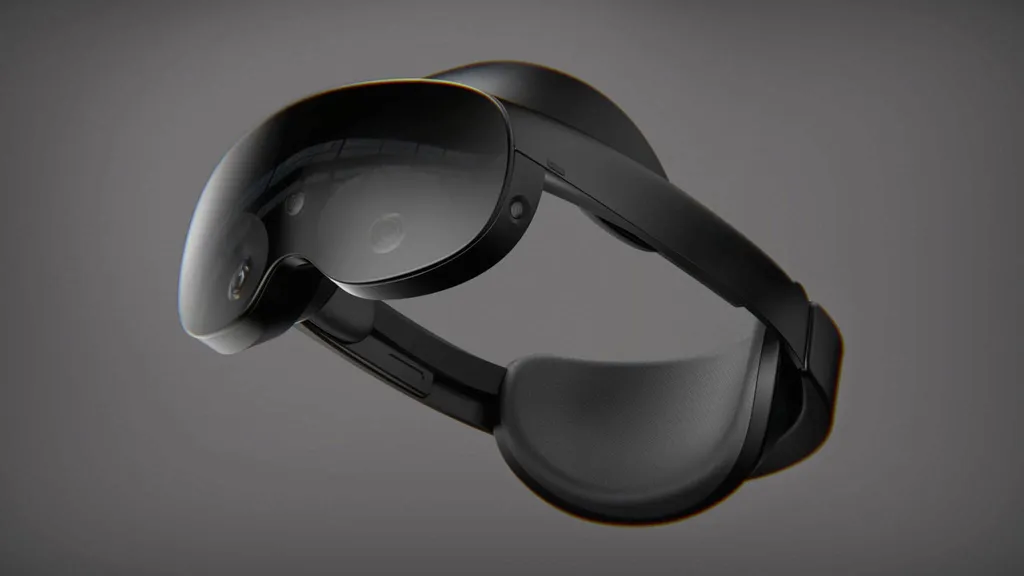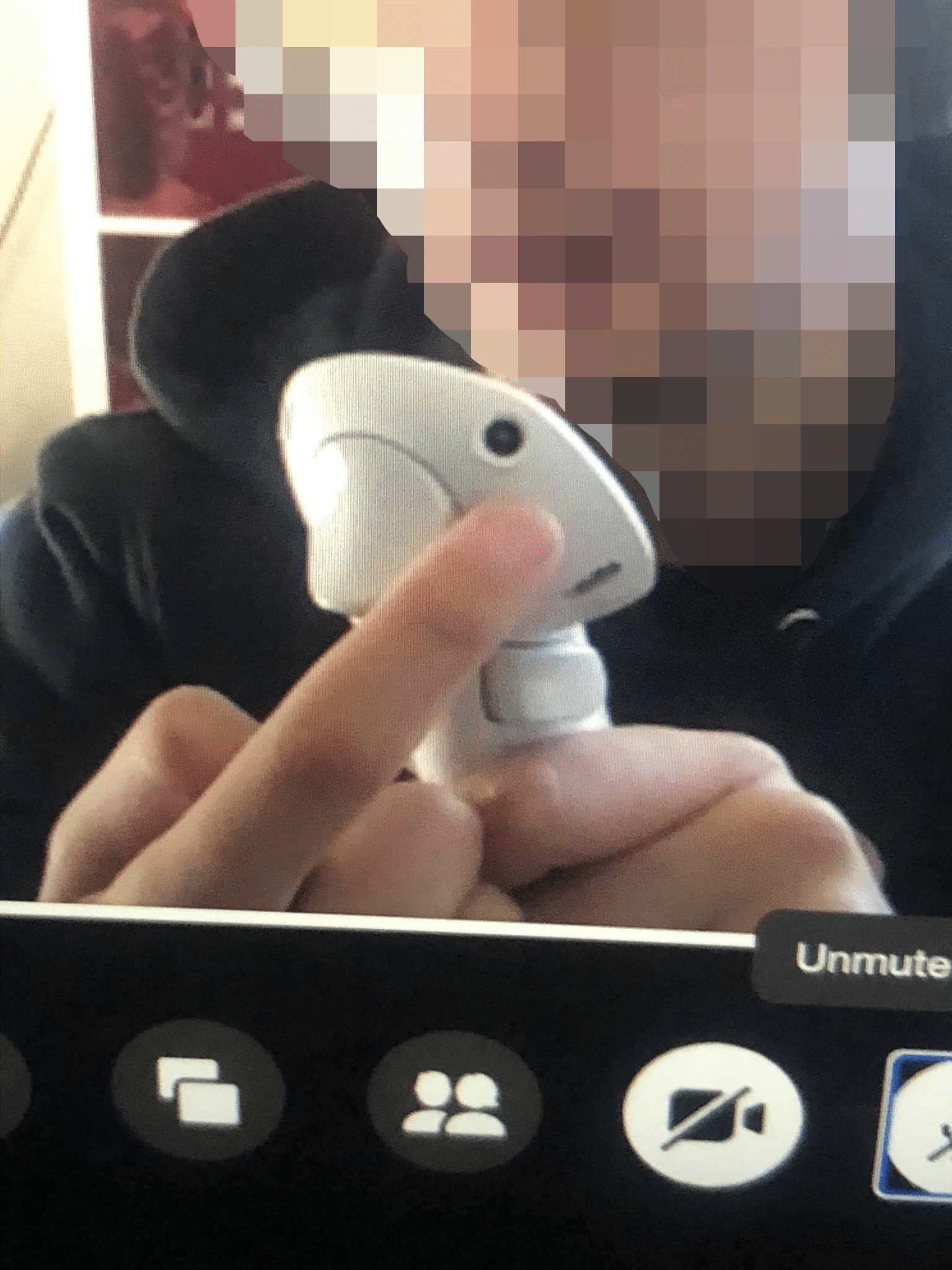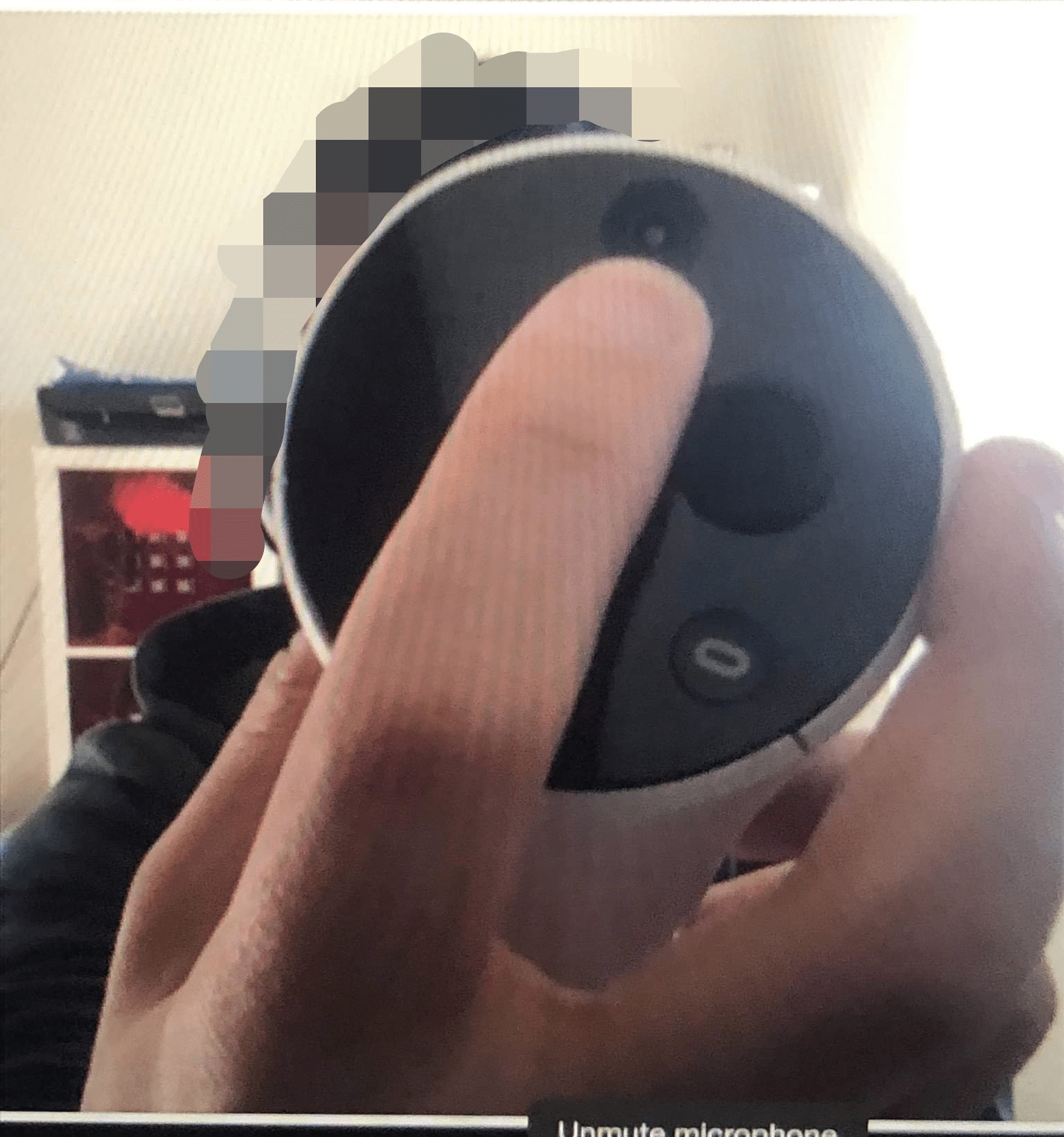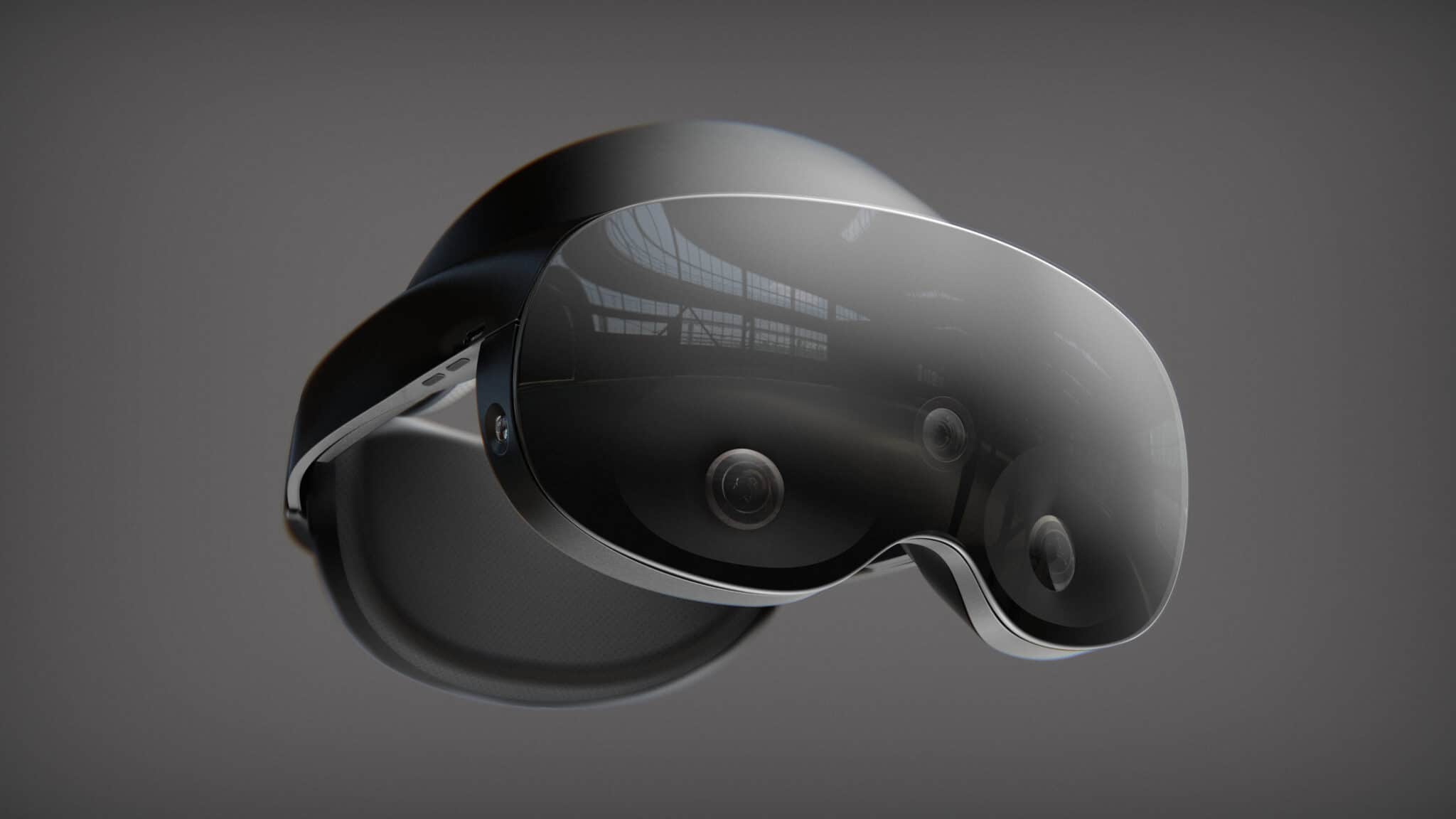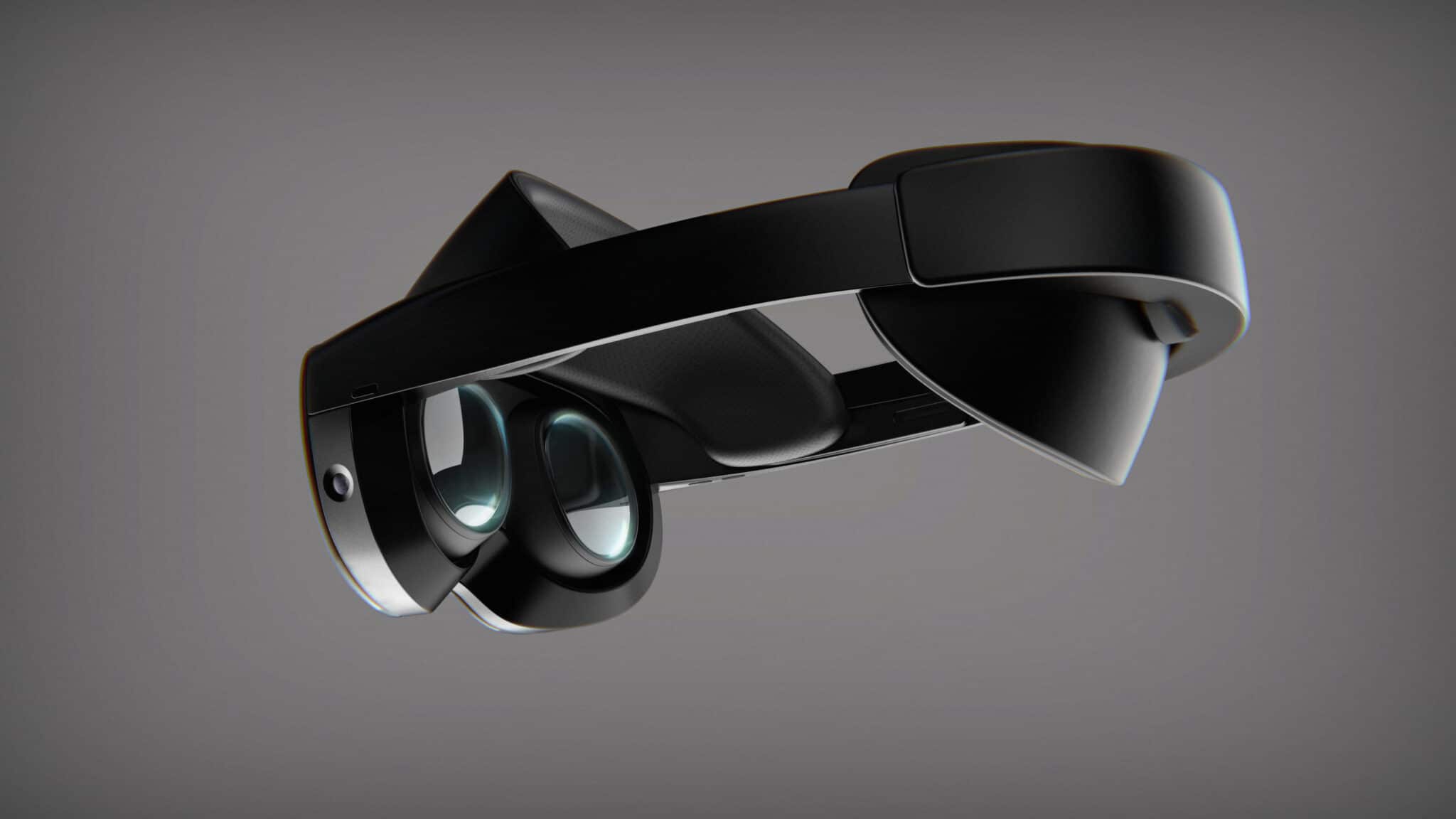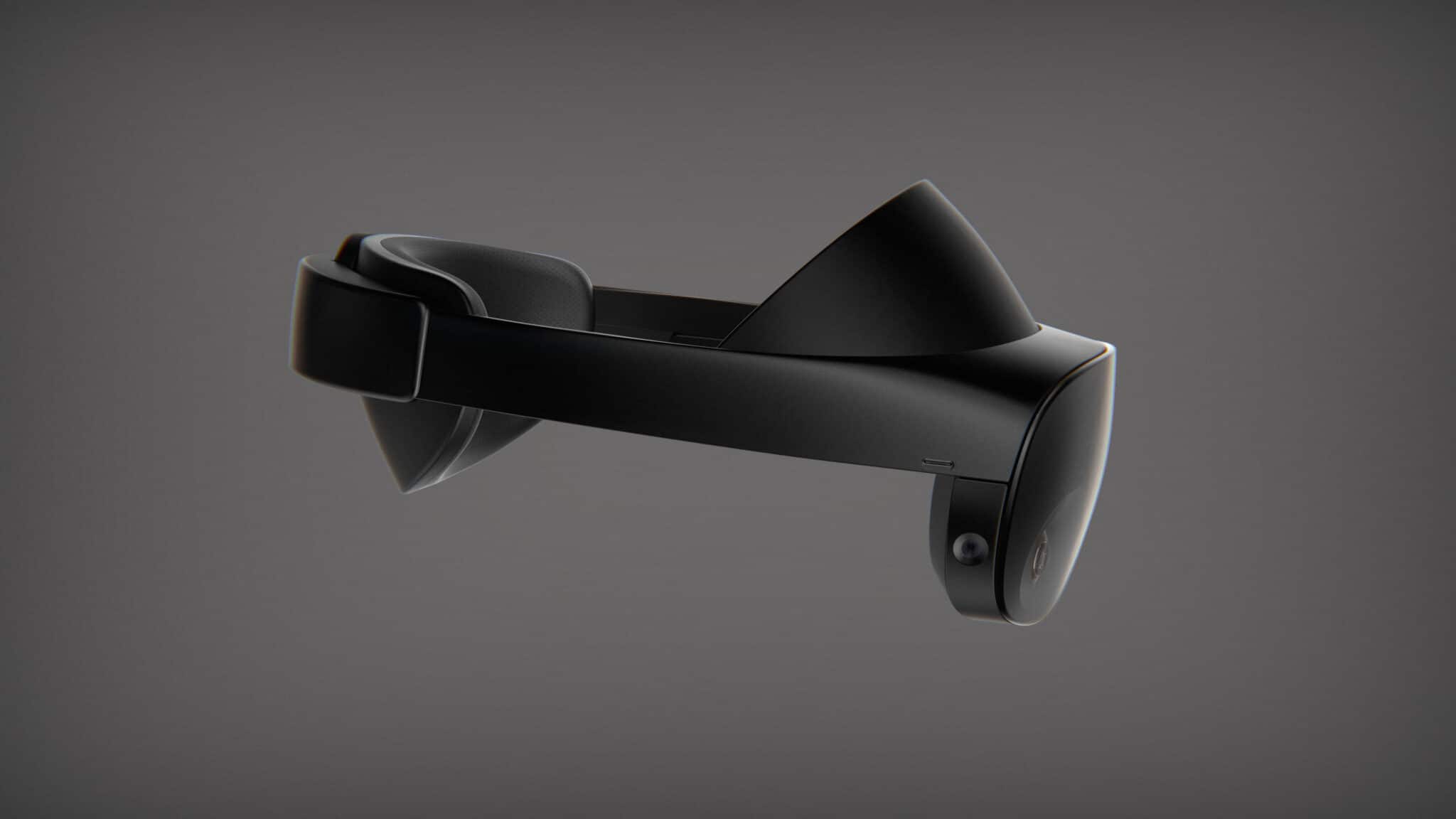YouTuber Bradley Lynch claims to have seen Meta’s upcoming Project Cambria headset, and collaborated with a product designer to produce detailed renders.
Cambria was announced in late October at Connect 2021. Cambria isn’t Quest 3 – CEO Mark Zuckerberg described it as “a completely new advanced and high end product” positioned “at the higher end of the price spectrum”. Cambria will be sold alongside Quest 2 as a higher end alternative.
Cambria appears to have a more balanced design than Quest 2, with a smaller frontbox and a strap resembling Quest 2’s elite strap accessory, potentially housing the battery. Meta says this is achieved through the use of multi-element pancake lenses instead of fresnel lenses.
Whereas Quest 2 has grainy black & white cameras, Cambria will have high resolution color passthrough for mixed reality experiences. It will also include eye tracking and face tracking to drive avatars in social VR.
At the time of the announcement, Meta confirmed it had sent development kits out.
Past ‘Quest Pro’ Leaks
Cambria was seemingly once known as “Quest Pro”.
In February 2021 now-CTO Andrew Bosworth was asked about the prospect of ‘Quest Pro’. He replied “Quest Pro, huh… Interesting…” and winked at the camera. By April 2021 Bosworth’s stance on “Quest Pro” became more solid. In a public conversation with “Consulting CTO” John Carmack, he remarked “I did hint at an AMA earlier this year about Quest Pro because we do have a lot of things in development where we want to introduce new functionality to the headset”.
In September references to ‘Quest Pro’ were found in the Quest firmware, as well as eye and face tracking calibration steps. Just two weeks later, the leaks significantly intensified.
Screenshots of a video call leaked showing Touch controllers with onboard cameras instead of an LED tracking ring. But days before this, a redditor going by the username Samulia had posted low resolution renders of these same controllers, alongside detailed apparent specs of the headset.
In that reddit post Samulia claimed:
- The headset’s codename is “Seacliff” and the controllers codename is “Starlet”.
- The display is a Dual-Cell LCD with the same resolution as Quest 2 but an advanced backlight with pixel-level control, enabling OLED-like black levels without OLED’s black smear or manufacturability issues.
- Three sensors are on the exterior of the headset: a 4K 120FPS RGB camera for color passthrough & mixed reality and two side-facing 1K near-infrared 120FPS cameras.
- Some form of laser pattern projection guides controller tracking and potentially aids hand tracking.
- Internally there are 480p 120FPS eye tracking cameras and two 400p 120FPS face tracking cameras.
Days after this YouTuber Basti564 – known for finding upcoming features in Quest firmware on multiple occasions – posted a new video backing up Samulia with firmware findings revealing the same sensor configuration as claimed and the same “Seacliff” codename. That suggested either Samulia had insider knowledge, or was using the same firmware decompiling methodology as Basti. Basti also found references to Seacliff having two cooling fans, up from one in Quest 2. The primary CPU cores in Quest 2 are actually underclocked. Better cooling could allow for significant improvement in CPU clock speed, and perhaps even GPU overclocking too.
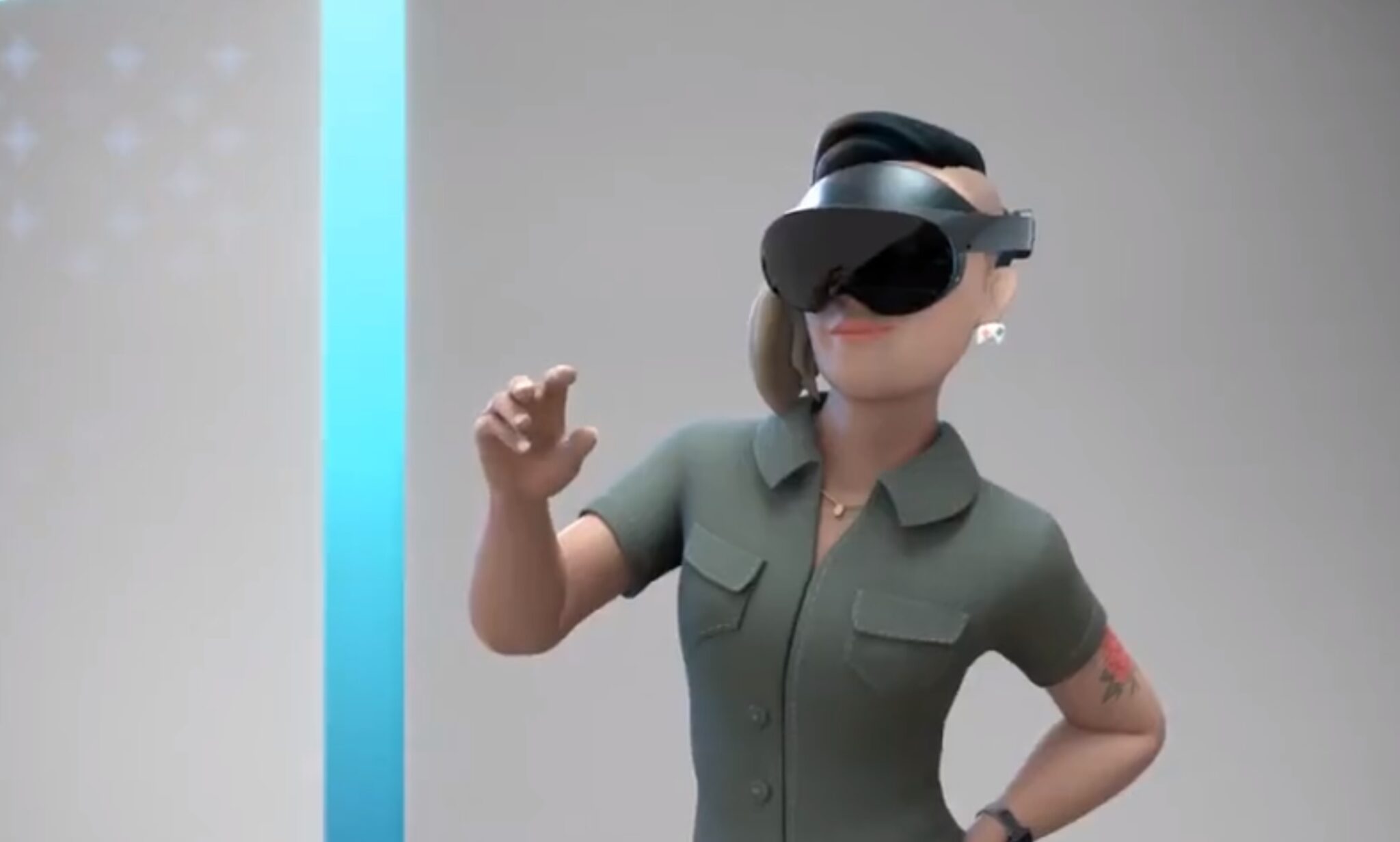
In October, just days before Cambria was teased by Meta, Basti discovered tutorial videos in the firmware giving us the first look at the headset’s design.
By November, just weeks after the dark teaser video, Basti had found textures of Cambria and its controllers, and formed them into a 3D model.
Bradley’s Spec Claims & Renders
Last week YouTuber Bradley Lynch posted a video to his channel SadlyItsBradley claiming a “friend” gave him impressions of the headset:
“Don’t expect Cambria to be something that different. It’s different, but not that much.”
The source also apparently claimed the field of view feels “very similar” to Quest 2.
Yesterday Lynch posted a new video in which he claims his source showed him real images of the Cambria headset via an app which prevents screenshots. Lynch worked with product designer Marcus Kane in the VR app Gravity Sketch to produce a detailed 3D model of what he saw for renders, seen above.
UPDATE April 13: Lynch now says his original renders were mistaken, and has again worked with Marcus Kane to produce corrected renders.
The renders look essentially identical to Meta’s teaser video and the leaked tutorial video, but the forward facing cameras are visible. Two are shown on the bottom and one directly in the middle. Based on Samulia’s leak, the central camera may be the 4K color sensor used for mixed reality passthrough.
Meta hasn’t given a specific release window for Project Cambria, but as recently as December confirmed it’s still on track to launch in 2022.

